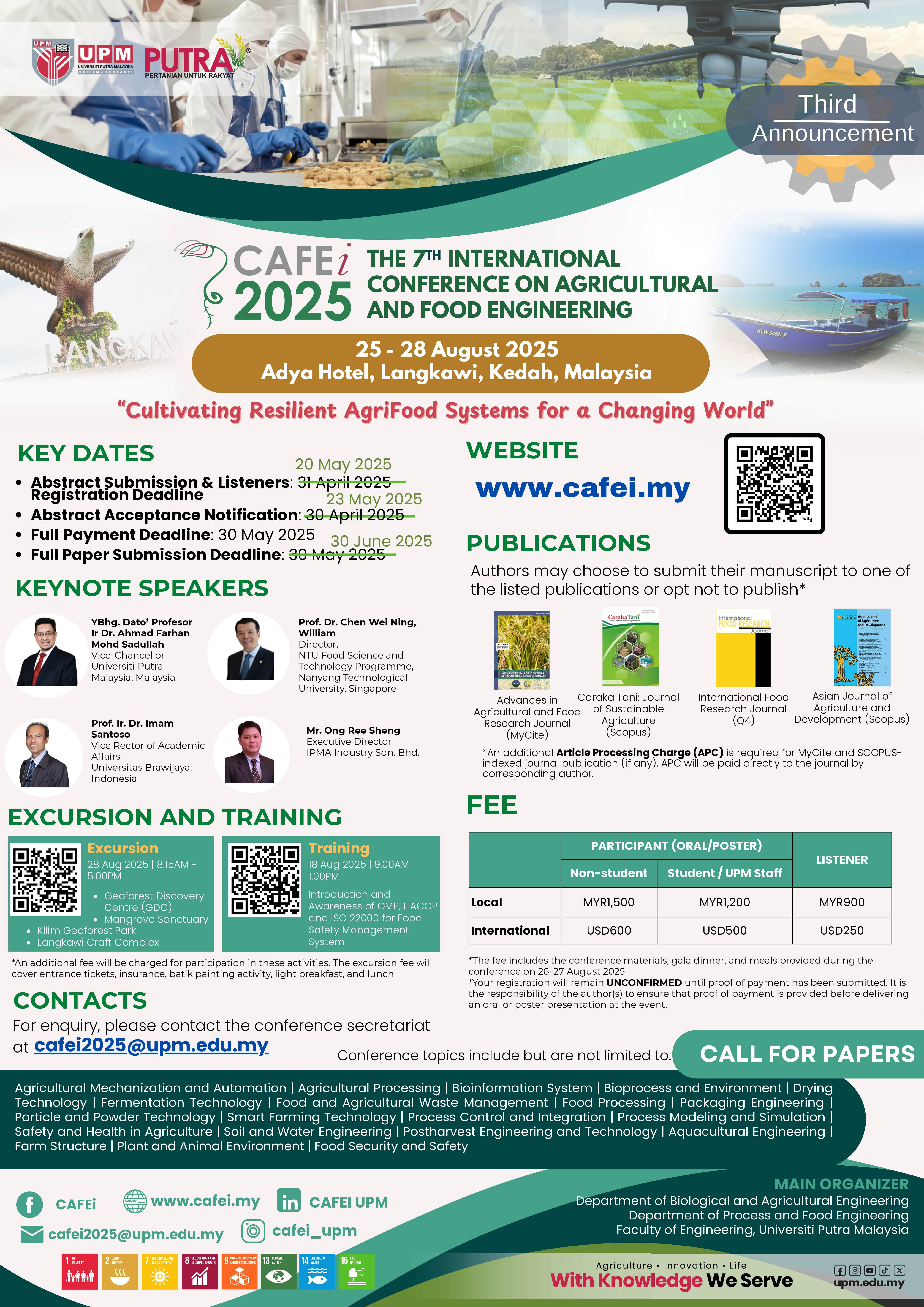A Review: Extraction Methods of Phenolic Compounds from Rambutan Peel (Nephelium lappaceum L.)
DOI:
https://doi.org/10.36877/aafrj.a0000403Abstract
Rambutan is a tropical fruit native to the ASEAN countries well-known for its refreshing flavour. However, due to the fresh consumption and its short shelf life, the peels are usually discarded as waste in a huge amount. Efforts have been made to reduce the amount of waste by optimally utilising to achieve sustainable development by utilising the peel for industrial applications. The rambutan peels contain a significant number of antioxidants due to the beneficial and nutritive phenolic compounds present. Rambutan peel extract possesses antioxidant, antidiabetic, anti-obesity, antiproliferative, antimicrobial and anticancer properties thus, can be used for application in the food, pharmaceutical and cosmetics industries. An extraction process is needed to isolate the phenolic compounds from the rambutan peel. Factors such as polarity of solvents, cost, extraction efficiency and extraction time need to be considered in the selected method as it will be implemented in industries. Nevertheless, no review paper has focused on the most suitable extraction method of rambutan peel that possibly can be adopted in the industry. This review paper summarises available extraction methods used to extract the phenolic compounds from rambutan peel and determines the most suitable extraction method that may be potentially used in industries. From the literature, the ultrasound-assisted extraction (UAE) method is the most potent method to be applied in the industry.
Downloads
Published
How to Cite
Issue
Section
License
Copyright (c) 2024 Nurdiana Izwan Hadi Wong, Naemaa Mohamad, Nadya Hajar, Nurul Azlin Tokiman

This work is licensed under a Creative Commons Attribution-NonCommercial 4.0 International License.
Author(s) shall retain the copyright of their work and grant the Journal/Publisher right for the first publication with the work simultaneously licensed under:
Creative Commons Attribution-NonCommercial 4.0 International (CC BY-NC 4.0). This license allows for the copying, distribution and transmission of the work, provided the correct attribution of the original creator is stated. Adaptation and remixing are also permitted.

This broad license intends to facilitate free access to, as well as the unrestricted reuse of, original works of all types for non-commercial purposes.
The author(s) permits HH Publisher to publish this article that has not been submitted elsewhere.

.png)

.jpg)



